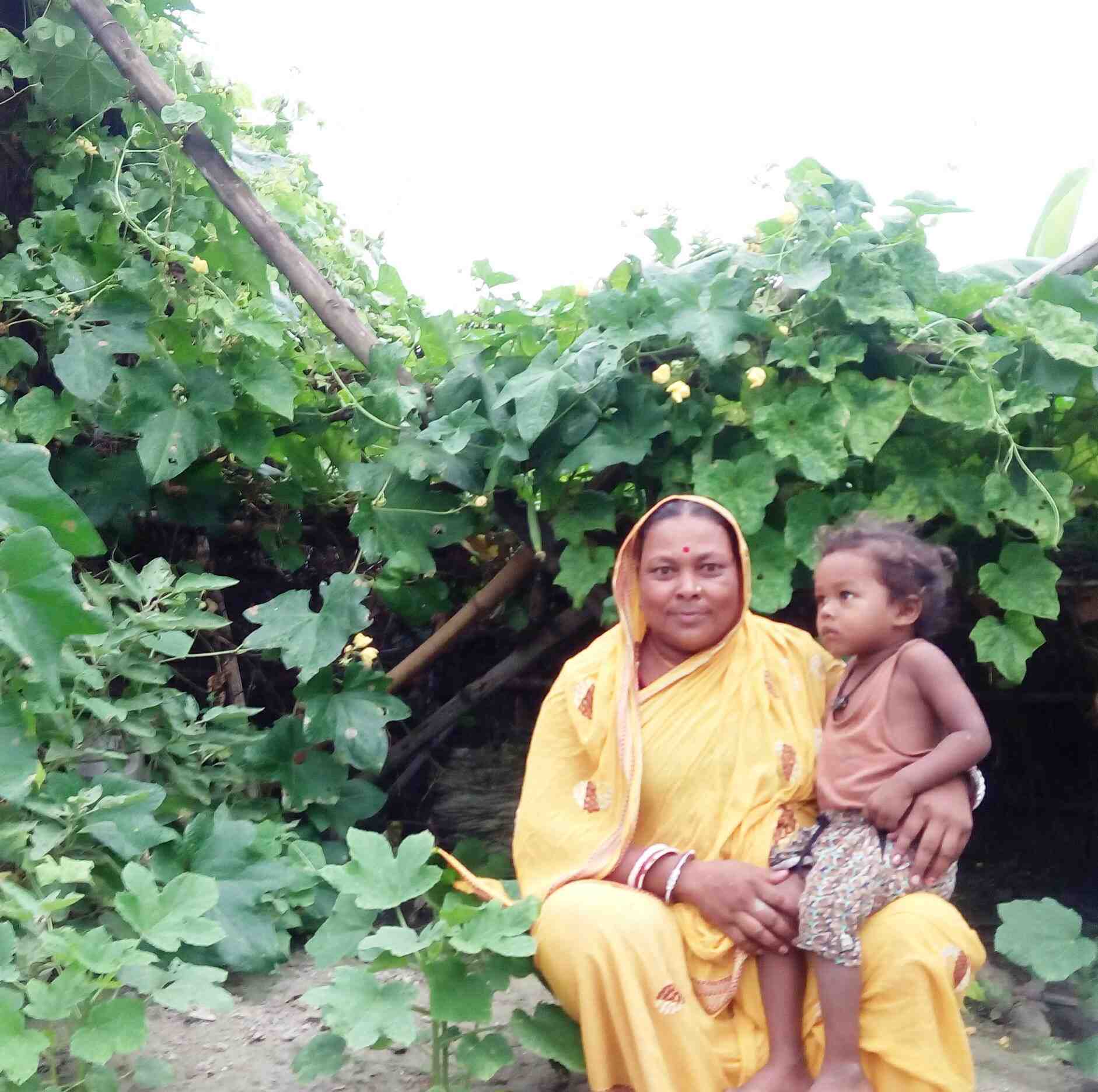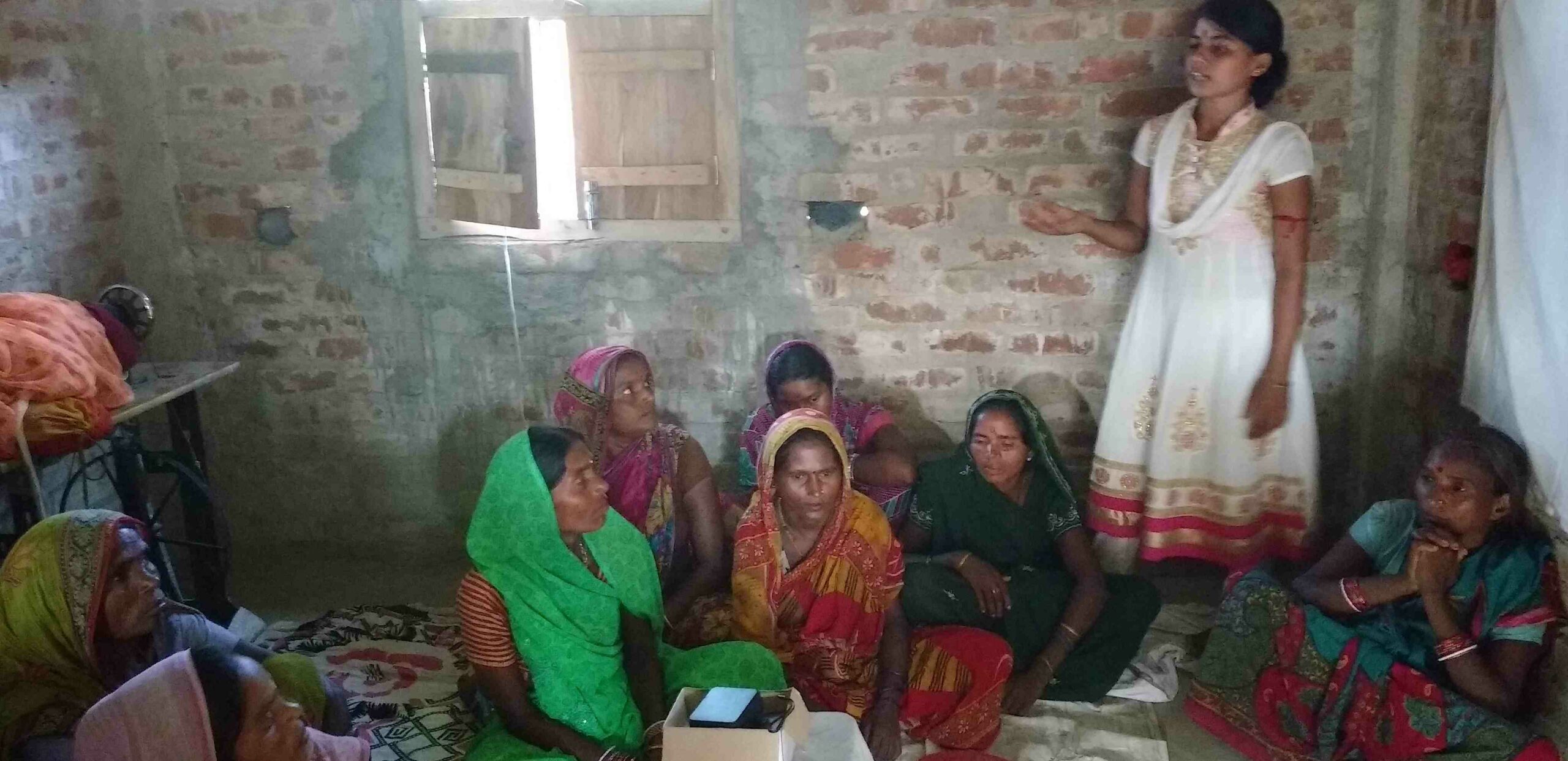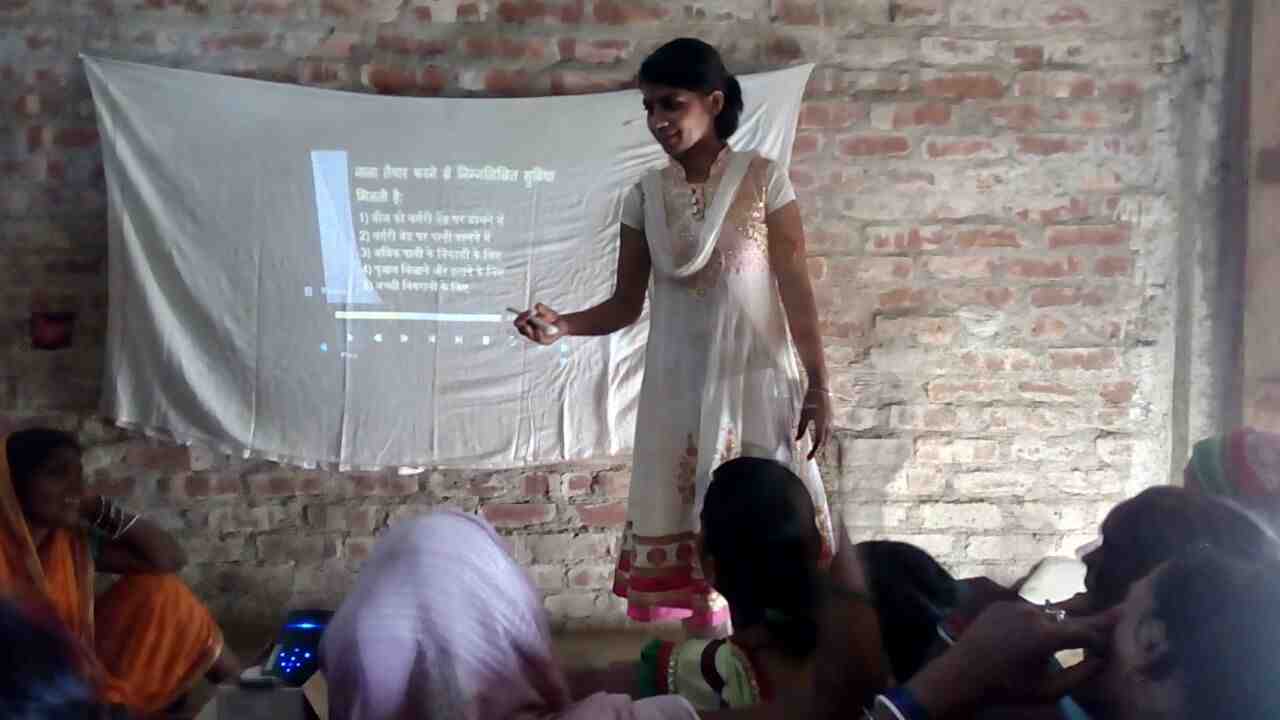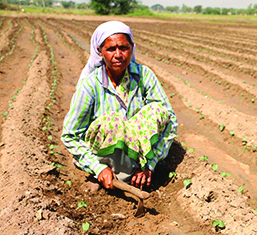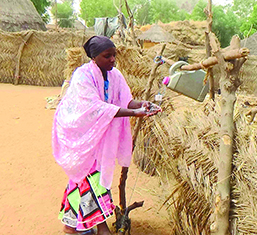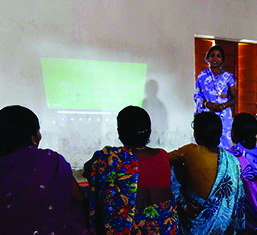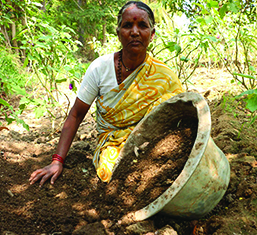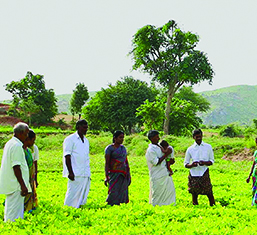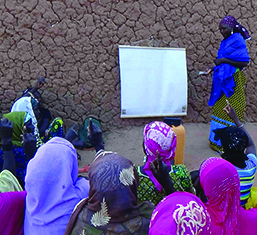When my mother was giving birth to my seventh sibling at home, she lost a lot of blood and subsequently fell into a coma. It was terrifying to witness this. My mother eventually woke up and recovered very well, but the whole ordeal had been unforgettable for me. What the 25-year-old Adnch Tsga had witnessed in her childhood was one of the complications of the traditional Ethiopian birthing practices, in which families deliver babies at home instead of hospitals. It is safe to say that she is not a fan of this, even though she herself was delivered in the same manner. With the goal to promote better health practices, and to teach others to not make the mistakes as her family, in 2010, Adnch became a health-extension worker (HEW). Just two years later, she married a man named Mesfin Bekele, whom she has now been with for four years. Three years after her marriage, she got pregnant with her first child. Within a span of a few years, she had rapidly checked things off her bucket list, but there was still more to come.
Adnch returned to her birthplace in Dembecha, a woreda (or district) in the Amhara region of Ethiopia, to apply her knowledge and skills learned from her time in Bahir Dar Technical Vocational Institute. In her local kebele (community), she spent time going door-to-door teaching families about preventive medicine. Things they could do to avoid getting sick in the first place, for example, cooking healthy meals, giving birth in a hospital, or washing hands before and after using toilets. But despite having the home-field advantage, things were not so easy for her. It was difficult when I first started working with the local groups of farmers, she shares. They don’t think it is very important to hear from us, and so they’re not very receptive when we try to teach them something, she adds.
Since the houses are far apart, she would often be unable to visit all of the families that she had planned to visit for the day. In addition, going from door-to-door would exhaust her, and by the end of the day, she wouldn’t have any energy left for other things. With all the struggles and obstacles, it seemed inevitable that Adnch would back down, and pass off the baton to someone else. However, she continued to persevere. Thankfully, the light at the end of the tunnel was just within reach.

Digital Green (DG), in collaboration with Sasakawa Africa Association (SAA), with support from Ministry of Agriculture (MoA), Government of Ethiopia, was holding a video dissemination training in her woreda, and Adnch heard about this exciting opportunity. However, the training venue was nine kilometers away from her home. Nine kilometers may not seem much, but without a car and barely any public transportation, it’s quite the distance.
In the training itself, Adnch immediately realized the potential of Digital Greens model. The video-based approach makes it easy for both the extension workers and farmers to adopt the practices, she says. In the video, you can easily understand the procedure, because you see each step with your own eye, so it motivates you to apply those practices, she adds. Not only that, Adnch was impressed with how concise the videos were. Being able to convey lots of information in such short amounts of time, it was exactly what she needed to get the attention of the farmers in her kebele.
The Digital Green approach was clearly a hit with Adnch and other extension workers in the kebele. So much so that the kebele had even made a few videos of their own to show to their local groups of farmers. Adnch mentioned participating in a few of them herself. In one video, she is seen using quality protein maize (QPM) to cook injera, the staple Ethiopian dish. For the layperson, QPM is a form of hybrid corn with high levels of amino acids. It is a good alternative for families that often suffer from malnutrition and inadequate levels of protein consumption. She has also participated in other videos where she shows how to prepare a lentil soup, and how to prepare a nutritious bread using local resources. These recipes are important as they promote healthy eating. They’ve also began production on a hand washing video. For the future, Adnch notes that she would love to make a video on newborn child management, and things to do to ensure a child’s healthy growth. A video on toilet management is also one of her goals, as some families in her kebele seem to use toilets improperly, or not use toilets at all.
The Digital Green video-based model has also minimized my workload. Now, I feel like have more time left to accomplish other things, shares Adnch. Gone are the days of tirelessly walking from door-to-door to teach families about proper health practices. All she had to do now was plan a dissemination venue, and show the videos to the farmers using the projector and training provided by DG and SAA. In turn, she only required two things from the farmers and their families: their presence and their attention.
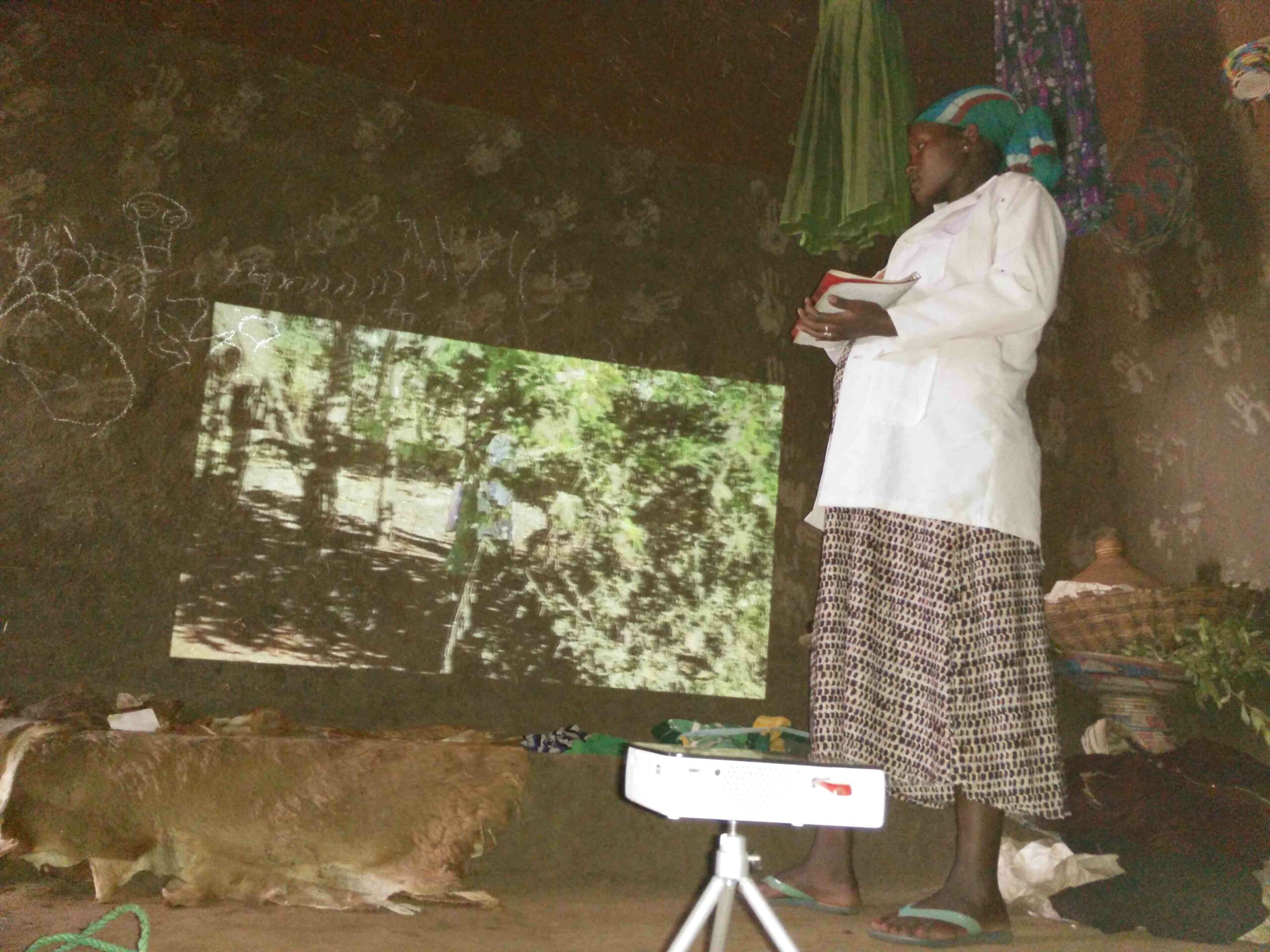
Most farmers appreciate the video-based approach because it doesn’t take too much of their time, shares Adnch. But there are still a few people that never show up, or don’t pay much attention, she adds. Adnch, though, comes prepared to every video dissemination with a plan. She knows exactly how to deal with the deviants. If farmers don’t show up, she holds another video dissemination for the absentees. If farmers don’t pay attention, she engages them by specifically targeting them for questions. At the end of the day, she wants to make sure that every farmer and their family are well prepared to start adopting the new recipes and new practices. The effects of this are starting to show, even in the kebeles relations with extension workers like Adnch. Earlier, they were quite resistant and adamant about sticking to their old ways, but now with the introduction of Digital Greens approach, they are growing more comfortable with the way extension workers are operating. Many families Adnch engages with think highly of her. Many families also think of her as their own daughter. Adnch attributes this to her newly found confidence. Ever since Digital Green was introduced to me, it feels like I have a companion right beside me guiding me, and supporting me. It has instilled confidence in me since I never feel like I am alone, she adds.
The health center in Adnchs kebele serves 37 developmental groups of which Digital Green has engaged 12. Each developmental group is made up of about 25 to 30 people. Adnch shares there are differences between the two. I have noticed that the engaged groups are more likely than the non-engaged groups to adopt the things we teach, she says. With the non-engaged group, they often miss a lot of information, or misremember the information, she adds. Moreover, in the engaged groups, she has noticed some changes in their lifestyles. Previously, these people didn’t know any of the recipes, but now they have started cooking some of the recipes we taught them through videos, she says. There is also one family that used to eat the same food every day of the week, but ever since we engaged them through videos, they’ve started diversifying their food choices, she adds.
Adnch is quite ecstatic to see her work finally come to fruition. When people adopt these new practices, it gives me a lot of energy, motivation, and hope for the future, she says. Now that I have been introduced to the video-based approach, I wish for all the farmers in my community, and not just a select few, to be engaged with the videos we produce and adopt the practices we teach, she adds. With the courage and work ethic of Adnch, it is only a matter of time before she accomplishes that as well.
